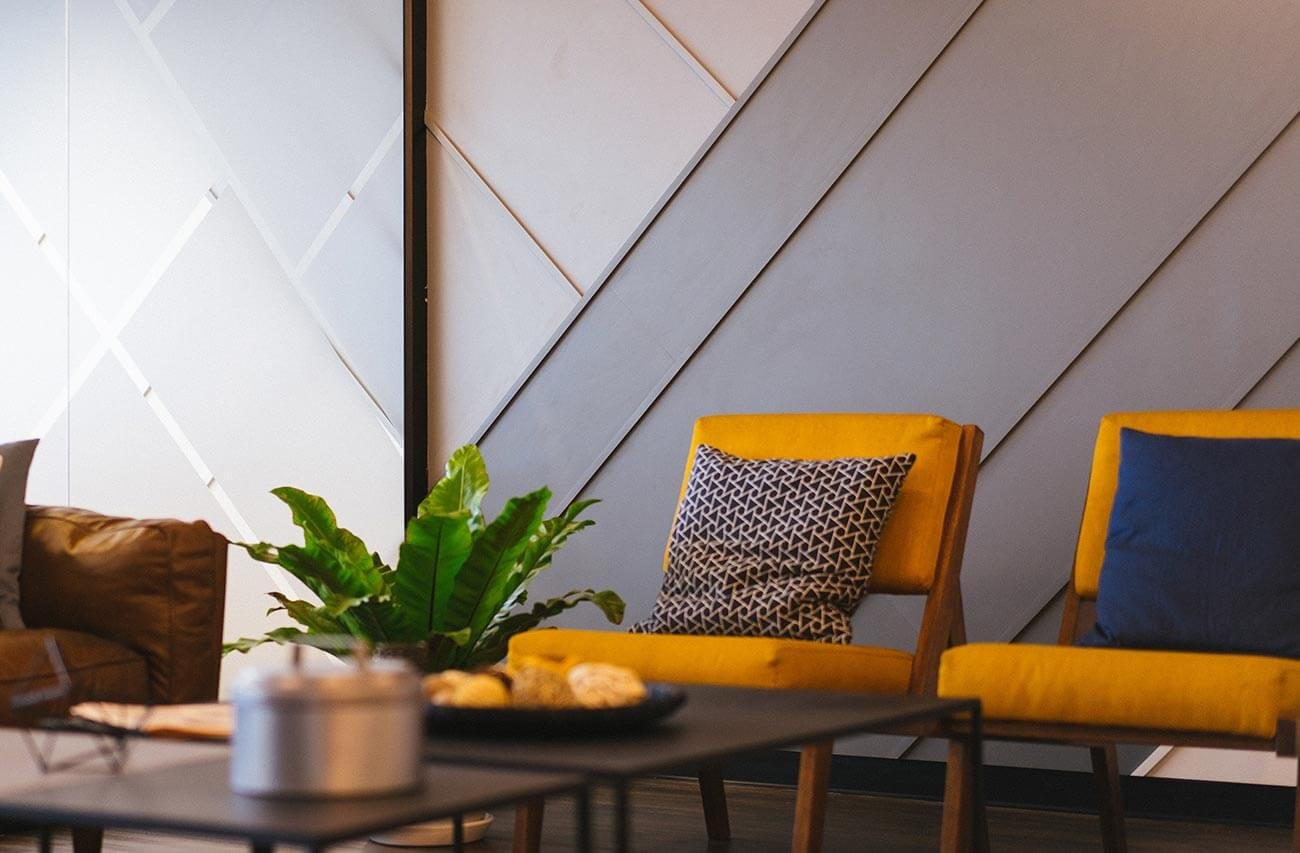
Interior Design Tips for Maximizing Small Spaces Without Sacrificing Style
Maximizing small spaces while maintaining style is a challenge faced by many homeowners, apartment dwellers, and interior designers. Limited square footage can often feel restrictive, but with the right approach, you can create a space that is both functional and aesthetically pleasing. Whether you’re working with a tiny apartment or a compact home office, the key lies in smart design choices that enhance the space’s potential. Below are actionable tips to help you maximize your small space without compromising on style.
1. Choose Multi-Functional Furniture
In small spaces, every piece of furniture should earn its keep. Multi-functional furniture is the cornerstone of space-saving design, offering versatility while maintaining an elegant aesthetic. Here are some of the most effective options:
1.1. Sofa Beds and Daybeds
Sofa beds are an excellent solution for living rooms or studios where you need both seating and a sleeping area. A well-designed sofa bed can transform a living area into a comfortable guest room without taking up extra space.
1.2. Foldable Tables and Chairs
Foldable furniture can easily be tucked away when not in use, providing flexibility for daily activities or hosting guests. Look for foldable dining tables, wall-mounted desks, or collapsible chairs that are both functional and sleek.
1.3. Storage Ottomans
Storage ottomans serve double duty as both seating and storage solutions. They can be used as a coffee table, footrest, or extra seating while discreetly storing blankets, magazines, or remote controls inside.
2. Use Vertical Space Wisely
When floor space is limited, think vertically. Walls are your best friends in small spaces because they provide an underutilized area that can serve multiple purposes.
2.1. Shelving and Wall-mounted Storage
Install floating shelves to store books, decor, or plants. Wall-mounted cabinets and hooks can help organize items like coats, bags, and keys, keeping your floors clear and maintaining a sense of openness.
2.2. Vertical Gardens
A vertical garden not only saves floor space but also adds an organic touch to your interiors. You can create a stylish green wall with hanging planters, wall-mounted plant holders, or a vertical hydroponic system.
2.3. High Ceilings for Lofted Beds
If you have high ceilings, consider using lofted beds to free up space below for a seating area, workspace, or additional storage.
3. Maximize Natural Light
Lighting is one of the most important factors in making a small space feel more open and airy. The more light you can let into the space, the larger and more inviting it will feel.
3.1. Light-colored Walls
Opt for light, neutral colors such as whites, off-whites, or light grays for your walls. These colors reflect natural light, making the room feel brighter and more spacious. Avoid dark hues, which can make a small space feel even more cramped.
3.2. Mirrors for Reflection
Mirrors are a great way to create the illusion of more space. Placing a large mirror on one wall can make the room appear wider or longer. Mirrors also reflect light, helping to brighten the space.
3.3. Use Sheer Curtains
Heavy curtains can block natural light and make a room feel closed off. Choose sheer curtains or blinds that allow plenty of light to filter through while still providing privacy.
4. Declutter and Keep Only What You Need
Clutter can overwhelm a small space, making it feel chaotic and cramped. A minimalist approach is essential in smaller homes or apartments, where every item must have a purpose.
4.1. Invest in Clever Storage Solutions
From under-bed storage to built-in cabinets, there are many ways to hide away items that would otherwise contribute to visual clutter. Maximize closet space with adjustable shelves, hooks, or baskets, and keep counters clear by storing essentials out of sight.
4.2. Minimalist Furniture
Choose sleek, simple furniture with clean lines and avoid oversized or bulky pieces that consume valuable floor space. Avoid overcrowding the room with unnecessary furniture items.
4.3. Keep Decor Simple
While decor is an important part of styling a small space, it’s essential to strike a balance. Limit the number of decorative items you place around the room. Opt for a few statement pieces rather than overwhelming the space with too much decor.


5. Create Zones in Open Spaces
In an open-plan space, it’s essential to define different areas for distinct functions. This can be achieved through clever use of furniture and decor elements.
5.1. Use Area Rugs to Define Spaces
Area rugs are an excellent way to visually divide your space into separate areas. A rug can delineate the living room from the dining area or the workspace from the relaxation zone. Just make sure the rug size is appropriate for the space to maintain a balanced, cohesive look.
5.2. Partitions and Room Dividers
Consider using a room divider, such as a sliding door, open shelving, or a tall plant, to separate different functional areas. A foldable screen can also add an elegant touch to the decor while serving as a partition.
5.3. Color Zones
Painting each zone in a different color can help create a sense of individuality while keeping the space open. Use varying tones of the same color family to maintain continuity and cohesion throughout the space.
6. Opt for Compact Appliances
When designing small kitchens or laundry areas, compact appliances are crucial to maximizing space without sacrificing functionality.
6.1. Stackable Washer-Dryer Units
In small apartments, stackable washer-dryer units save space while offering the same laundry capacity as side-by-side versions. You can also find small dishwashers, compact refrigerators, and mini stoves that work well in limited spaces.
6.2. Integrated Appliances
Consider integrated appliances, where the dishwasher, refrigerator, or microwave is built into cabinetry for a seamless and streamlined look. This approach can eliminate visual clutter and give your space a sleek, modern appeal.
7. Embrace Open Shelving in the Kitchen
Open shelving in the kitchen not only provides easy access to your items but also helps create a sense of openness. Use open shelves to display dishes, glasses, or decorative items. Keep the shelves organized and minimal to avoid clutter.
7.1. Maximize Counter Space
Opt for a minimalist approach on countertops. Keep only the essentials, such as a coffee maker or a small plant. Store other kitchenware in cabinets or on shelves to maintain a clean, functional space.
7.2. Floating Islands
If you have a small kitchen, consider a floating island or a mobile kitchen cart that can be moved around as needed. This provides additional prep space and storage while keeping the kitchen feeling open.
8. Personalize Without Overcrowding
A small space should feel like your own, but over-decorating can make it feel cramped. Instead of filling every corner with items, focus on selecting a few personal pieces that reflect your taste.
8.1. Statement Art
Large-scale artwork can add personality and visual interest without overwhelming the room. Choose pieces that are bold in color or design, but keep the overall aesthetic balanced.
8.2. Personal Touches
Add personal touches with family photos, mementos, or unique decor items that make the space feel like home. Just ensure these items complement the overall design and don’t create visual clutter.
Conclusion
Maximizing small spaces without sacrificing style requires thoughtful planning, creative design, and strategic use of furniture and decor. By focusing on multi-functional furniture, maximizing vertical space, using natural light, and keeping clutter to a minimum, you can create a stylish and functional living space that feels open and inviting. Embrace clever storage solutions, define zones, and personalize your small space with a few key design elements. With the right approach, even the smallest spaces can be transformed into beautiful, functional, and stylish areas.

